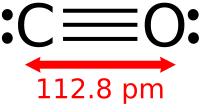
Photo from wikipedia
Triphenylamine (TPA) has often been used as a building block to construct functional organic materials, yet is rarely employed in oxygen reduction reaction (ORR) due to its strong electron-donating ability.… Click to show full abstract
Triphenylamine (TPA) has often been used as a building block to construct functional organic materials, yet is rarely employed in oxygen reduction reaction (ORR) due to its strong electron-donating ability. This versatile segment bears a three-dimensional spatial structure whose effect has not been fully explored in catalytic systems. To this end, five symmetric cobalt porphyrins with carbazole and TPA derivatives have been synthesized and their ORR performance has been evaluated in acid medium. It was found that all compounds produced mainly hydrogen peroxide in oxygen reduction, with CP1 attaching benzyl derivatives and XCP4 possessing TPA-carbazole substituents at the meso-position of porphyrin showing similar ORR potential but more positive as compared to the other analogues. Importantly, XCP4 achieved the greatest response current, the largest electron transfer numbers and H2O2 yields amongst the investigated molecules. Detailed electrochemical measurements suggested that the dipole induced partial charges on the porphyrin in tandem with the more exposed molecular orbitals on TPA contributed to this enhancement, where the former attracting more protons to the affinity of reactive sites and the latter increasing collision frequency between the electrocatalyst and H+ in solution. This is the first attempt to integrate the intermolecular forces with more exposed molecular orbitals in altering the electrochemical process.
Journal Title: ACS applied materials & interfaces
Year Published: 2020
Link to full text (if available)
Share on Social Media: Sign Up to like & get
recommendations!